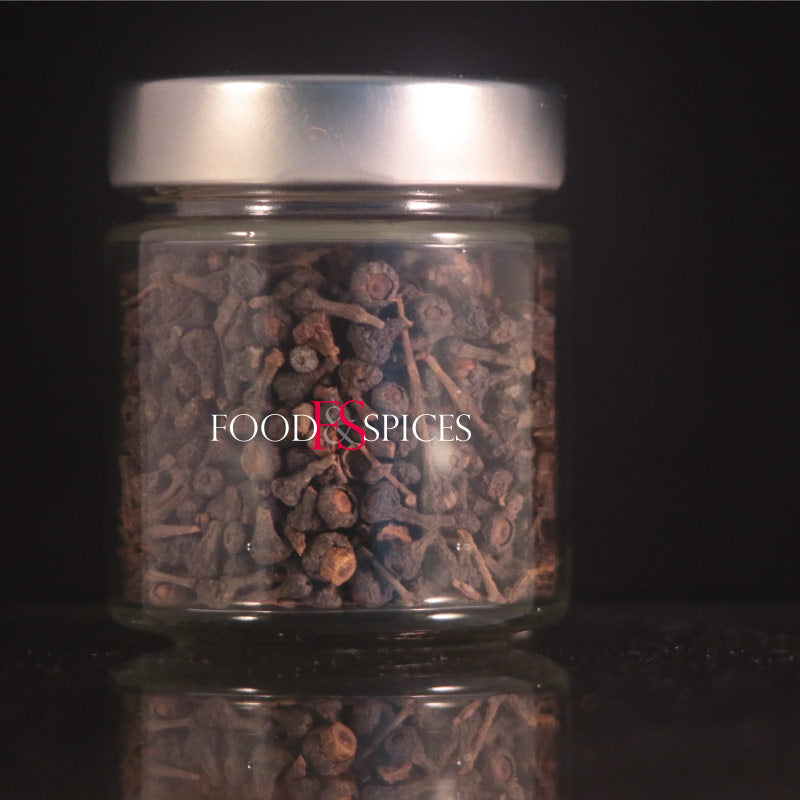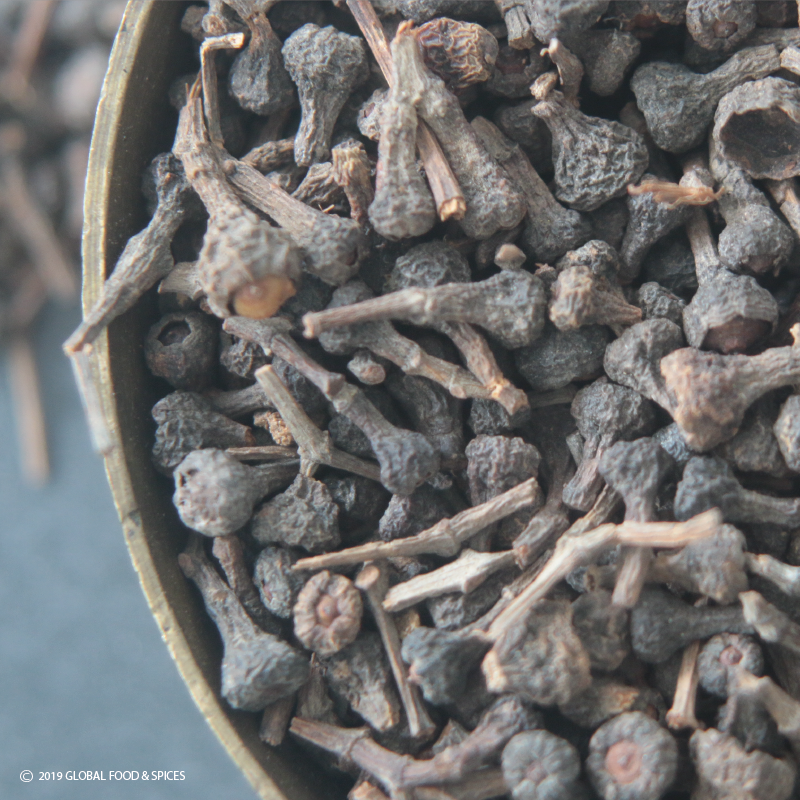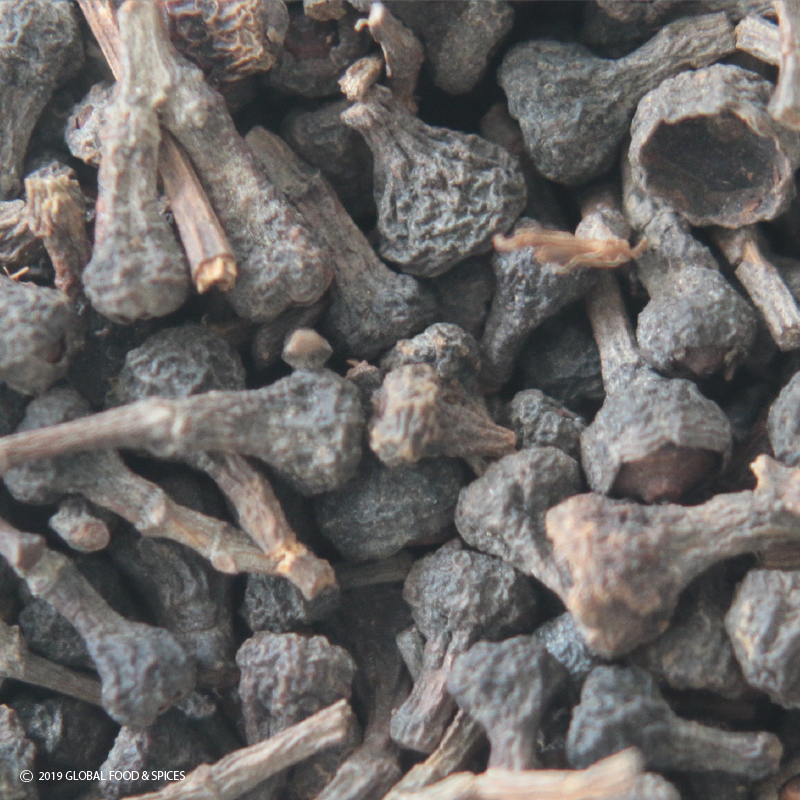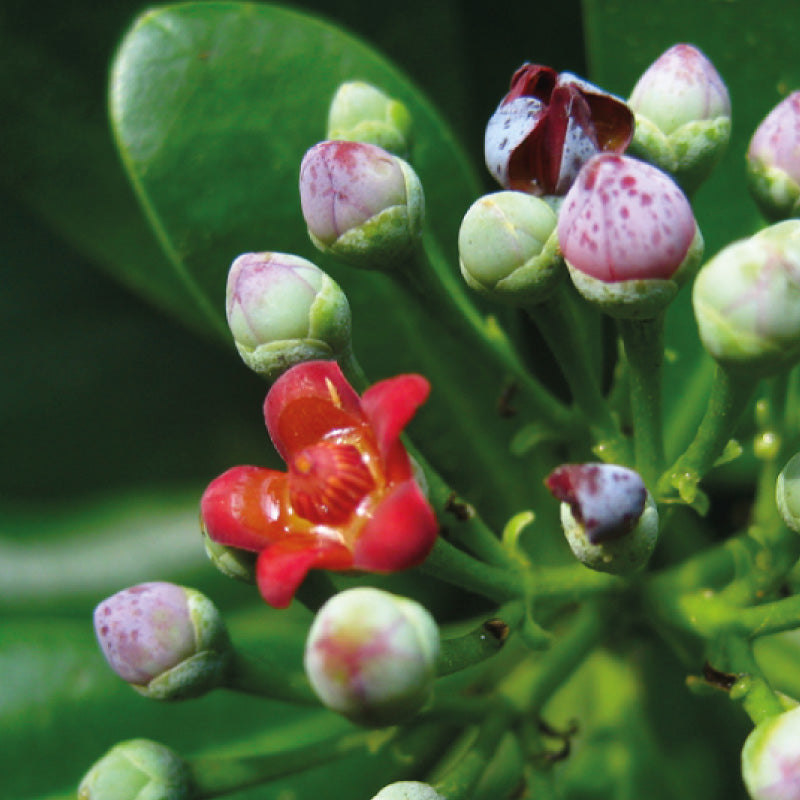FOOD&SPICES
Cinnamon buttons (cassia)
Cinnamon buttons (cassia)
Unable to load availability for pickup
Cinnamon buds (kwei tze in Chinese) are the flower bases containing the budding seed of the cassia tree. The buds are used both whole and ground in savory and sweet dishes. They are very aromatic, without bitter notes.
The Chinese cassia (Cinnamomum aromaticum sinens) is a cinnamon variety. It is the only species whose flower bases are picked on a larger scale and traded as a spice. The buds look a bit like cloves, but appearances can be deceiving.
The buds are the fleshy flower bases (receptaculum), which enclose the budding seed, as is the case with the acorn. The buds are picked shortly after flowering. When the buds are dried correctly, the flower base turns deep brown, in contrast to the light brown, sometimes barely visible berry. You can recognize fresh cassia buds by this color contrast. Because the seeds shrink as they dry, the berries sometimes fall out. When cassia buds are stored for too long, the buds turn pale brown and also lose their aroma.
The buttons are less than 1 cm long and half a centimeter in diameter. Although they are less aromatic than the dried bark, they are more 'flowery' and without the bitter notes of cassia.
Cassia buds have traditionally been used in Chinese medicine. They are first described in the Chinese herbal book Shen-nung around 2700 BC. The Romans used them, thanks to Arab and Phoenician traders who brought them from India. They regularly sailed on the Orient with their sailing ships thanks to their knowledge of the winds, a skill that the Romans did not have.
This spice generally comes from China or Myanmar (formerly Burma), but is increasingly also picked in other cinnamon countries. Our buttons come from the south of China (Guandong).
Smell and taste
The main fragrance in cinnamon buds is the fairly sweet cinnamyl acetate, which smells like flowers (roses) in addition to cinnamon. The buds contain hardly any cinnamaldehyde, the main odor and flavor component in cinnamon and cassia bark. The buds also contain relatively little coumarin compared to the cassia bark, and are therefore less bitter than the bark.
Usage
The buds are used finely ground in desserts, or whole in curries and pulaos, in marmalade and mulled wine. The wine drink Hippocras dates back to the Middle Ages, in which ginger, grain of paradise and cinnamon buds are used.
In Germany people like to work with these buttons in winter marmalades and compotes, such as blood orange marmalade or jelly.
Recipe(s):

Features:
- 100% dried flower bases of the Cinnamomum aromaticum
- origin: China, Guandong
Assortment
- available in glass and stand-up pouch (no test tubes)
- glass jar contains 45 grams
- stand-up pouches with a capacity of up to 30 to 300 grams
- larger quantities on request
Gift packaging
- the jar is available in a tasteful gift packaging, consisting of a cube box filled with black tissue paper
- for an overview of our gift packaging, please refer to the gift packaging section
Health
Cinnamon from the cassia plants contains a lot of coumarin, the sweet taste, but in larger quantities also a slightly bitter undertone of this type of cinnamon.Real cinnamon (Ceylon cinnamon) contains hardly any coumarin. These cinnamon buds from the cassia contain that, but the coumarin content is lower than in the bark of the cassia.
Coumarin is an aromatic substance that inhibits blood clotting and in exceptional cases can cause liver damage. The European Food Safety Authority (EFSA) has banned the addition of synthetically manufactured coumarin to foodstuffs and set a maximum tolerable daily intake (TDI) of 0.1 mg per kilogram of body weight per day for natural coumarin.
Cinnamon buds contain almost 20 times as much coumarin as Ceylon cinnamon (0.31 compared to 0.017 grams per 100 grams).
Save:
- store your cinnamon buds in closed packaging
- preferably store in a dark, dry and cool place
- best before August 2026 (08-2026)
- this expiration date is an indication
Batch number
The batch number helps us trace which supply an item comes from. It is stated on the packing slip and the invoice
Share







